
The Battle of Brunanburh was fought in 937 between Æthelstan, King of England, and an alliance of Olaf Guthfrithson, King of Dublin, Constantine II, King of Scotland, and Owain, King of Strathclyde. The battle is often cited as the point of origin for English nationalism: historians such as Michael Livingston argue that "the men who fought and died on that field forged a political map of the future that remains [in modernity], arguably making the Battle of Brunanburh one of the most significant battles in the long history not just of England, but of the whole of the British Isles."

Blind Harry, also known as Harry, Hary or Henry the Minstrel, is renowned as the author of The Actes and Deidis of the Illustre and Vallyeant Campioun Schir William Wallace, more commonly known as The Wallace. This was a lengthy poem recounting the life of William Wallace, the Scottish independence leader, written around 1477, 172 years after Wallace's death.

The Battle of Edgcote took place on 24 July 1469, during the Wars of the Roses. It was fought between a Royal army, commanded by the earls of Pembroke and Devon, and a rebel force led by supporters of the Earl of Warwick.

Darvel (Scots: Dairvel, Scottish Gaelic: Darbhail) is a small town in East Ayrshire, Scotland. It is at the eastern end of the Irvine Valley and is sometimes referred to as "The Lang Toon".

Abercorn is a village and civil parish in West Lothian, Scotland. Close to the south coast of the Firth of Forth, the village is around 5 km (3.1 mi) west of South Queensferry. The parish had a population of 458 at the 2011 Census.
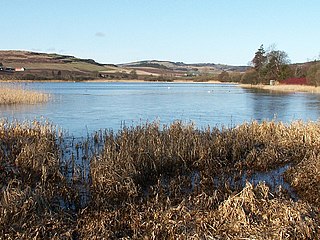
Lindores is a small village in Fife, Scotland, in the parish of Abdie, about 2 miles south-east of Newburgh. It is situated on the north-east shore of Lindores Loch, a 44 ha freshwater loch. A possible derivation of the name Lindores is 'church by the water'. The ruins of Abdie church, about 0.5 miles south-west of the village are possibly the site of an ancient shrine connected to the Celtic foundation at Abernethy. After the foundation of Lindores Abbey in 1191 the church was given to the abbey.
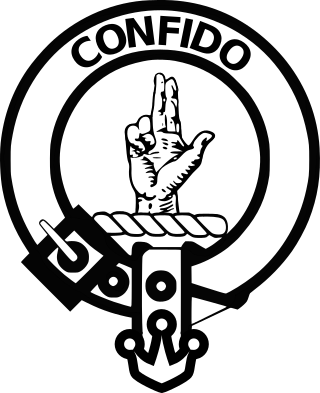
Clan Boyd is a Scottish clan of the Scottish Lowlands and is recognized as such by the Lord Lyon King of Arms.
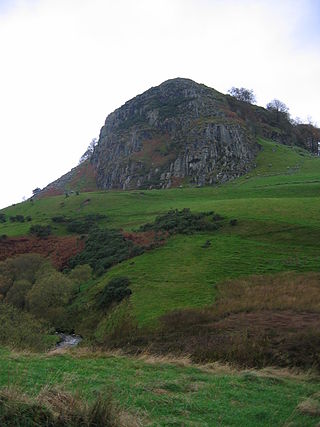
Loudoun Hill is a volcanic plug in East Ayrshire, Scotland. It is located near the head of the River Irvine, east of Darvel.
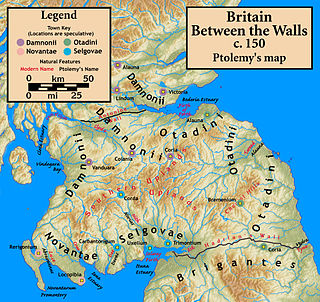
The Damnonii were a Brittonic people of the late 2nd century who lived in what became the Kingdom of Strathclyde by the Early Middle Ages, and is now southern Scotland. They are mentioned briefly in Ptolemy's Geography, where he uses both of the terms "Damnonii" and "Damnii" to describe them, and there is no other historical record of them, except arguably by Gildas three centuries later. Their cultural and linguistic affinity is presumed to be Brythonic. However, there is no unbroken historical record, and a partly Pictish origin is not precluded.

The old Barony and castle of Corsehill lay within the feudal Baillerie of Cunninghame, near Stewarton, now East Ayrshire, Scotland.

The Lochmaben Stone is a megalith standing in a field, nearly a mile west of the Sark mouth on the Solway Firth, three hundred yards or so above high water mark on the farm of Old Graitney in Dumfries & Galloway in Scotland. The area is also known as Stormont. Together with a smaller stone it is all that is left of a stone circle dating back to around 3000BC.

Stichill is a village and civil parish in the historic county of Roxburghshire, a division of the Scottish Borders. Situated 2 miles (3.2 km) north of the Burgh of Kelso, Stichill lies north of the Eden Water and 5 miles (8.0 km) from the English Border at Coldstream.

Wallacestone is a village in the area of Falkirk, central Scotland. It lies 1.5 miles (2.4 km) south-west of Polmont, 2.5 miles (4.0 km) south-east of Falkirk and 1.0 mile (1.6 km) north-east of California.
Riccarton is a village and parish in East Ayrshire, Scotland. It lies across the River Irvine from Kilmarnock, this river forming the boundary between Riccarton and Kilmarnock parishes, and also between the historical districts of Kyle and Cunningham. The name is a corruption of 'Richard's town', traditionally said to refer to Richard Wallace, the uncle of Sir William Wallace. The parish also contains the village of Hurlford.
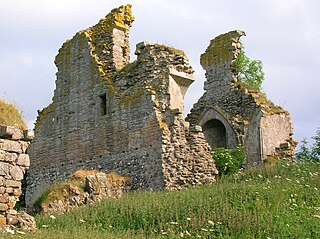
Craigie Castle, in the old Barony of Craigie, is a ruined fortification situated about 4 miles (6.4 km) southeast of Kilmarnock and 1 mile (1.6 km) southeast of Craigie village, in the Civil Parish of Craigie, South Ayrshire, Scotland. The castle is recognised as one of the earliest buildings in the county. It lies about 1.25 miles (2 km) west-south-west of Craigie church. Craigie Castle is protected as a scheduled monument.

Wallace's Monument, the Wallace Tower, or the Barnweil Monument is a category-A-listed building dedicated to the memory of William Wallace located on Barnweil Hill, a prominent location in the parish of Craigie, South Ayrshire, Scotland.
The Barns of Ayr was, according to Blind Harry in The Wallace, a site in Ayr, Scotland, which was used as English barracks. According to Blind Harry, a number of Scottish barons of Ayrshire were called to a meeting with King Edward I of England at a barn used as an English military barracks, only to be massacred and hanged, including Sir Ronald Crawford Sheriff of Ayr, Sir Bryce Blair of Blair, Sir Neil Montgomerie of Cassillis, Crystal of Seton, and Sir Hugh Montgomerie. In revenge, William Wallace burned the barracks with the English inside.

The Lands of Borland or Boreland formed a castle and land holdings within the old Barony of Cumnock, East Ayrshire, Parish of Old Cumnock, Scotland. Lying two miles south of Cumnock the property was mainly held by a cadet branch of the Hamilton family from around 1400 before passing by marriage to the Montgomeries and others. For consistency the spelling 'Borland' will be used throughout.

Wallace's Cave in the Lugar Gorge at Auchinleck in the Parish of Auchinleck is an 18th-century grotto contemporary with Dr Johnson's Summerhouse, also located on the Auchinleck Estate. It shows superior workmanship in its construction, possibly being the enlargement of a pre-existing cave. The cave or grotto lies downstream of the confluence of the Dippol Burn with the River Lugar and is reached via a once well formed path, however access is now hazardous due to the condition of the cliff edge path and the vertical drop into the River Lugar.
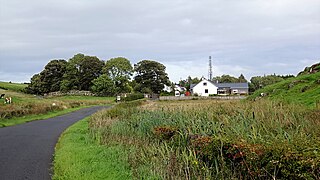
Craigie is a small village and parish of 6,579 acres in the old district of Kyle, now South Ayrshire, four miles south of Kilmarnock, Scotland. This is mainly a farming district, lacking in woodland, with a low population density, and only one village. In the 19th century, high quality lime was quarried here with at least three sites in use in 1832.


















